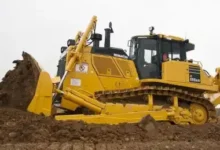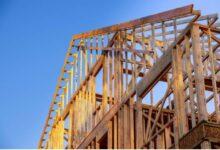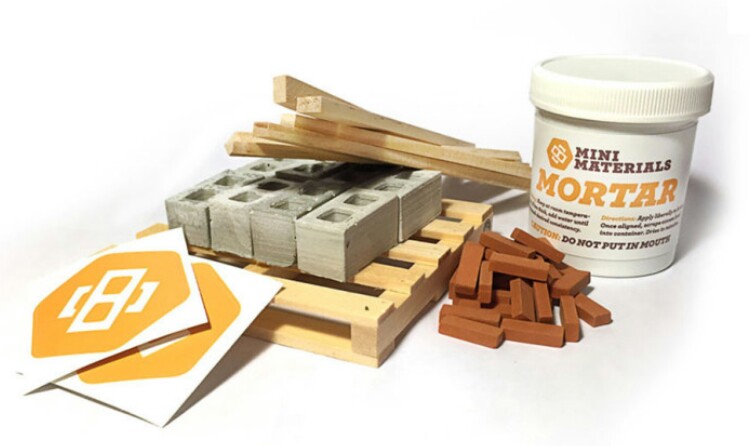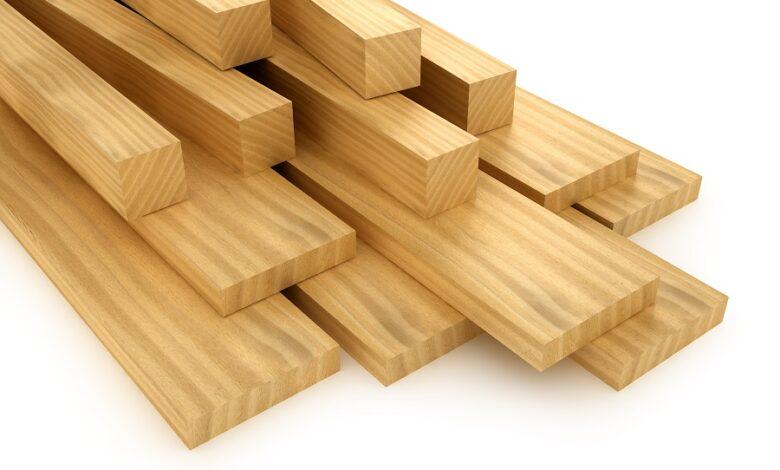
15 Best Wood for Roofing in Nigeria
15 Best Wood for Roofing in Nigeria – Africa, a continent teeming with diverse ecosystems and natural wonders, is also home to an impressive array of hardwood tree species. Among these, the following fifteen species stand out for their exceptional qualities, versatility, and significance in the woodworking and furniture industries. From the sought-after Teak to the lesser-known but equally valuable Afara, these African hardwoods have played a significant role in shaping the world of design, construction, and craftsmanship.15 Best Wood for Roofing in Nigeria
The 15 Best Wood for Roofing in Nigeria are:
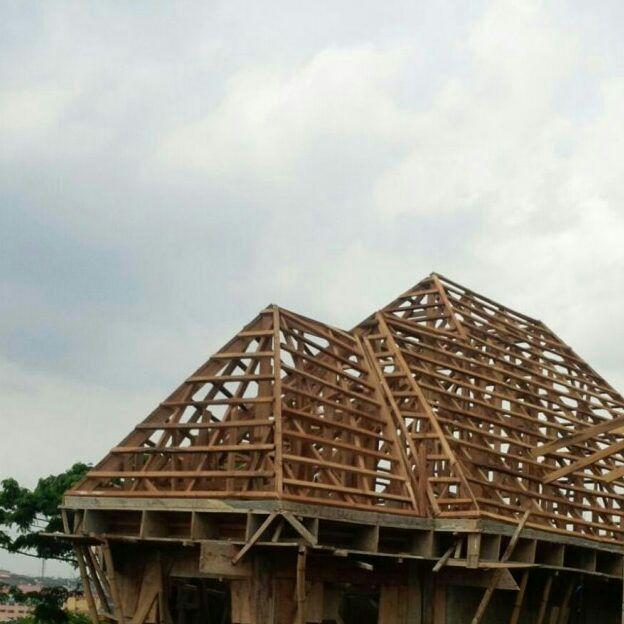
1. African Mahogany
African Mahogany, belonging to the Khaya genus, is synonymous with elegance and durability. It comprises several species, such as Khaya ivorensis (Ivory Coast Mahogany) and Khaya senegalensis (Senegal Mahogany), each offering unique qualities. Renowned for its reddish-brown hue, straight grain, and resistance to decay, African Mahogany is a favorite among furniture makers, carpenters, and musical instrument manufacturers. Its versatility allows it to be used for anything from high-end furniture to boat building.Romantic love message
👉 Relocate to Canada Today!
Live, Study and Work in Canada. No Payment is Required! Hurry Now click here to Apply >> Immigrate to CanadaRead Also: Top 15 Traditional Nigerian Herbs and Health Benefits
2. Iroko (Milicia excelsa)
Iroko, often referred to as “African Teak,” is a formidable hardwood with a distinctive golden to medium-brown color that darkens with age. Native to Western Africa, Iroko boasts exceptional strength and durability, making it a popular choice for outdoor applications, such as decking and marine construction. Its resistance to insect attack and moisture-related issues has earned it a reputation as a reliable choice for both indoor and outdoor projects.
3. Teak (Tectona grandis)
Teak, although not exclusive to Africa, has found a home on the continent. Revered worldwide for its exceptional stability, weather resistance, and striking golden-brown color, Teak is often referred to as the “king of woods.” It’s a favorite in shipbuilding, outdoor furniture, and high-end flooring due to its natural oils that repel water and resist decay.Good morning My Love Message
4. Gmelina arborea
Gmelina arborea, commonly known as White Teak, is celebrated for its fast growth and versatility. Its light yellow to pale brown color, combined with its straight grain and medium texture, makes it suitable for furniture, veneers, and plywood. White Teak’s rapid growth contributes to its eco-friendly reputation, as it can be sustainably harvested in a relatively short time.
Read Also: 15 Most Populated Country in Africa
5. Khaya ivorensis
Khaya ivorensis, part of the African Mahogany family, is a treasured species on its own. Its reddish-brown heartwood and interlocking grain produce a striking ribbon-like figure, making it an eye-catching choice for high-end furniture, cabinetry, and decorative veneers. Beyond its aesthetic appeal, Khaya ivorensis is valued for its dimensional stability and resistance to termites.JAMB portal
6. Obeche (Triplochiton scleroxylon)
Obeche, often referred to as “African Whitewood,” boasts a pale yellow to nearly white color that darkens slightly with exposure. Its lightweight nature and ease of working make it a preferred choice for carving, molding, and millwork. Obeche’s applications range from picture frames to interior trim, and it’s considered an ideal option for intricate detailing due to its fine texture.
7. Afara (Terminalia superba)
Afara, also known as Limba or Frake, is characterized by its light to medium brown color and straight grain. While it may not be as widely recognized as some other hardwoods, Afara is prized for its workability, stability, and moderate durability. It finds its place in furniture making, cabinetry, and interior finishings, often as a cost-effective alternative to more premium species.
8. Sapele (Entandrophragma cylindricum)
Sapele’s reddish-brown color and distinctive ribbon-like stripe pattern have made it a sought-after species for cabinetry, paneling, and musical instruments. As a member of the Mahogany family, Sapele offers a balance of aesthetics and durability. It’s also known for its lustrous finish and resistance to rot, making it suitable for both interior and exterior applications.
Read Also: Top 15 Busiest Cargo Ports in the World
9. Mahogany (Swietenia spp.)
Mahogany, synonymous with luxury and elegance, has several species that thrive in Africa, including African Mahogany (Khaya spp.) and Genuine Mahogany (Swietenia mahagoni). Known for its rich reddish-brown color and fine grain, Mahogany has been a favorite among furniture makers for centuries. Its exceptional workability and ability to take stains and finishes make it a versatile choice for high-quality furniture and cabinetry.
👉 Relocate to Canada Today!
Live, Study and Work in Canada. No Payment is Required! Hurry Now click here to Apply >> Immigrate to Canada10. Utile (Entandrophragma utile)
Utile, often referred to as “Sipo,” shares similarities with Sapele in terms of appearance and application. Its reddish-brown hue, interlocking grain, and moderate luster have contributed to its popularity in furniture making, joinery, and decorative veneers. Utile is appreciated for its stability and resistance to moisture changes, making it a reliable choice for various woodworking projects.NYSC Portal
11. Ekki (Lophira alata)
Ekki, also known as Azobe, is renowned for its remarkable strength, durability, and resistance to both decay and insect attack. Its dark reddish-brown color and high density make it suitable for heavy construction, marine piling, and industrial flooring. Ekki’s exceptional load-bearing capabilities have earned it a place in critical infrastructure projects and demanding applications.
12. Mpingo (Dalbergia melanoxylon)
Mpingo, commonly referred to as African Blackwood, is a dense, dark wood prized for its use in musical instruments, particularly woodwind instruments like clarinets and oboes. Its rich black color, fine texture, and unique acoustic properties have made it a favorite among instrument makers and musicians. Mpingo’s rarity and specific growing conditions contribute to its high value.
Read Also: 15 Best Powder for Under Makeup Nigeria
13. Opepe (Nauclea diderrichii)
Opepe’s reddish-brown color and coarse texture characterize it as a durable hardwood used primarily in heavy construction, infrastructure projects, and marine applications. Its natural resistance to termites and decay, coupled with its strength, make it suitable for bridges, wharves, and other outdoor structures where longevity is crucial.Information guide Nigeria
14. Ayous (Triplochiton scleroxylon)
Ayous, often referred to as “Samba” or “Obéché Wawa,” is a pale yellow to white hardwood known for its straight grain and lightweight nature. It’s often used in the construction of lightweight furniture, interior moldings, and decorative panels. Ayous is favored for its ease of carving, making it a popular choice for intricate detailing.
15. Meranti (Shorea spp.)
Meranti, although not exclusive to Africa, has a presence on the continent. It’s part of a diverse genus that encompasses various species with distinct properties. Ranging in color from pale pink to deep red, Meranti offers versatility in applications such as plywood, joinery, and general woodworking. Its affordability and wide availability have contributed to its popularity in construction and furniture making.
Read Also: Top 15 Clip-in Hair Extensions in Nigeria
Conclusion
The African continent treasures a wealth of hardwood species that have made noteworthy contributions to the worlds of woodworking, craftsmanship, and design. For example, the luxurious Mahogany, the utilitarian Iroko, and the exotic Mpingo each offer unique characteristics that cater to a wide range of applications.
Indeed, woodworkers have deeply ingrained the craft of woodworking in human history and have evolved it over time to incorporate these African hardwoods into diverse aspects of design and construction. Additionally, the richness of these timbers transcends their physical attributes; they carry cultural, economic, and ecological significance too. Many of these species not only provide livelihoods for local communities but also play crucial roles in sustainable forestry practices.
Subsequently, industries seeking not just aesthetic appeal but also durability and functionality often originate the demand for these hardwoods. Craftspeople make furniture from African Mahogany that radiates elegance and sophistication, while builders use Iroko decks to withstand the harshest weather conditions. Moreover, boatbuilders utilize Teak’s unrivaled stability to make it a favorite in luxury boatbuilding, and cabinetmakers employ Sapele’s stunning figure to add character to cabinetry and interiors.
Check JAMB Result
Check and Confirm: How much is Dollar to Naira

